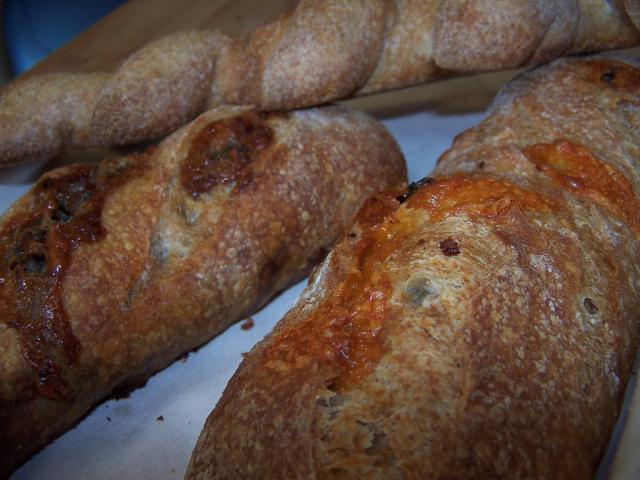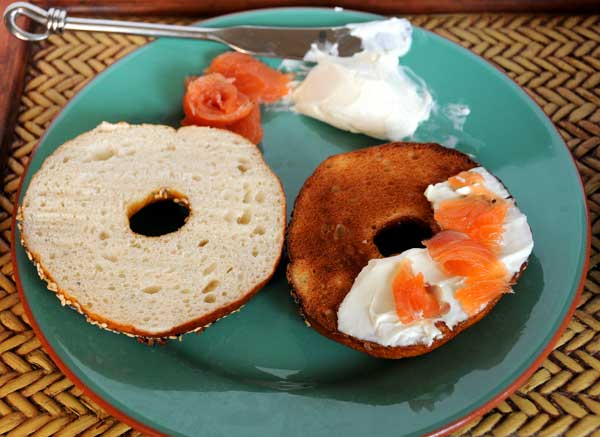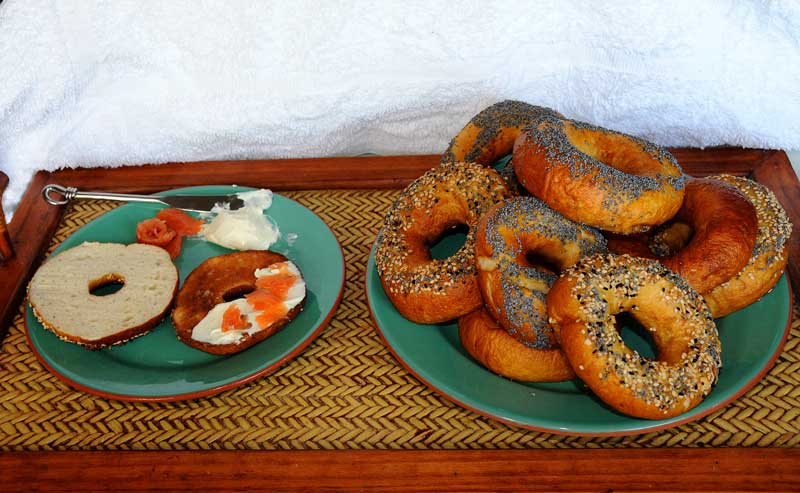A couple months ago I was using my KA Pro 6 of a dozen or so years of age when it finally stripped a gear. I ordered parts and repaired it, but as I thought about it I realized that it no longer suited my needs. I expect it will last another decade or more, but it will be reserved for light loads.
The bagel formula I have been using is from Jeff Hamelman and I like it quite a lot. This time I decided to try the BBA, or at least a somewhat modified version. That makes a bakers dozen, which would have been too much for the KA since I use HG flour. Fortunately, I have a new Bosch Universal! I decided to double the recipe and see how the new machine worked.
I want to say right now that this post is not about a KA vs. whatever. The KA is a fine machine for many purposes, but it was never intended to make 26 large bagels worth of high gluten dough at once. Consequently any comparison between the two is irrelevant. Use what you have within its limits and if you move beyond it do so and remember the good things you've made rather than bemoan what you could not do. My 2 cents.
Onward!
I followed the BBA formula as I've said, creating the sponge in the mixing bowl. Once it sufficiently proofed I added part of the flour to collapse the sponge. I've read that getting dough into the center column could be a problem so I incorporated the ingredients in two batches, mixing half the flour in for a few moments then in with the rest. In doing so I had no problems later.
One concern was that I wasn't sure just how long I should mix the ingredients. This was an untried formula in an unfamiliar machine. I decided that I would let it knead for 5 minutes and try to windowpane test it every minute thereafter. I found that 8 minutes provided sufficient time. I could have gone a little longer, but I don't like to over-oxidize.
Please forgive the low quality cell phone pics.
Here's the Beast with its first "victim"

This may not look like much, but it's roughly 7 lbs of high gluten bagel dough which ultimately made 26 bagels of about 4&1/4 ounces each. That would have been impossible before, but the Bosch acted like it didn't care at all.

I went back and forth on Hamelman or Reinhart and ultimately the latter won simply because I wanted to try it. That said I didn't depart entirely from my old ways and follow everything to the letter.
What follows is my standard work practice for bagels.
I use an apartment sized fridge for retarding dough and I pre-cut sheets of parchment to fit the shelves. I then spray them lightly with Pam and rub it into the paper. I then cut the number of portions from the dough ball which will fit onto the sheet and roll them into ropes and form the bagel. Onto the sheet they go and into the fridge after covering with plastic wrap. Once that's all done I let them sit for about 15 hours until the next morning.
I preset the oven to go off an hour before I woke set to 500F. The bottom two racks have rectangular stones and the top one has a large aluminum flat sheet.
When I get up I take another set of parchment sheets sized to fit the stone and spray as before to avoid sticking. I don a pair of surgical gloves and add three teaspoonfuls of lye to three quarts of cold water in a stainless pan. Note cold water. The reason the reason for that is lye will react strongly with water, and if the water is hot it could go everywhere, including yourself. Cold is definately the safe way to go.
There's a thread explaining the use of lye with bagels. Coincidentally it turns out the fellow who does this shares my profession and we both grew up in Philly. Small world, eh?
Once the water gets up to a boil I put 4 bagels in and flip them over at about 30 seconds for a total of a minute them remove them. One side of the bagel is flatter than the other and what I do is put whatever topping I want on the more curved surface and have that side down on the parchment. I then carefully take the hot sheet out of the oven and quickly slide parchment and all onto it. The reason being is that I want both sides to bake a bit, but not completely set. The hot sheet holds enough heat to start the process without burning the toppings and the flat side being exposed to the open oven has a chance to rise and round itself. I then use tongs and slide the parchment and bagels onto another flat sheet, close the oven and quickly flip them over. Back into the oven onto one of the stones. I'll repeat the process of boiling and topping on another parchment paper and repeat, then put that onto the other stone. Total baking time is about 22 minutes at 500F. With the oven opening and closing I doubt the oven stays quite that hot for the second batch so I may give another minute or two if needed. 26 bagels required three batches on the size stones I have and here's the results, minus several.

I took some with me to work that morning and they were well received. They were nice and chewey with a light crunch when bitten into. I will have to try Hamelman again with the Bosch to compare the results between it and the Pro 6. There was better development of gluten this time, but there are too many variables to know why.
As far as the machine itself, I'm thrilled with it. I would have to do this in three or four batches and the time involved would have been prohibitive. I believe I could have done perhaps three dozen, but this is about the perfect quantity.








